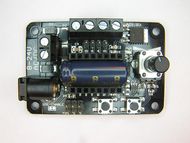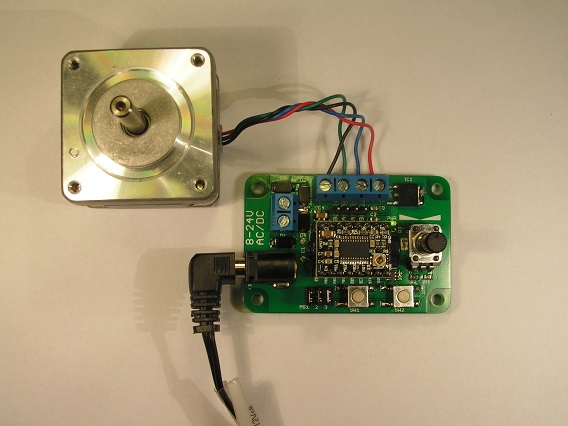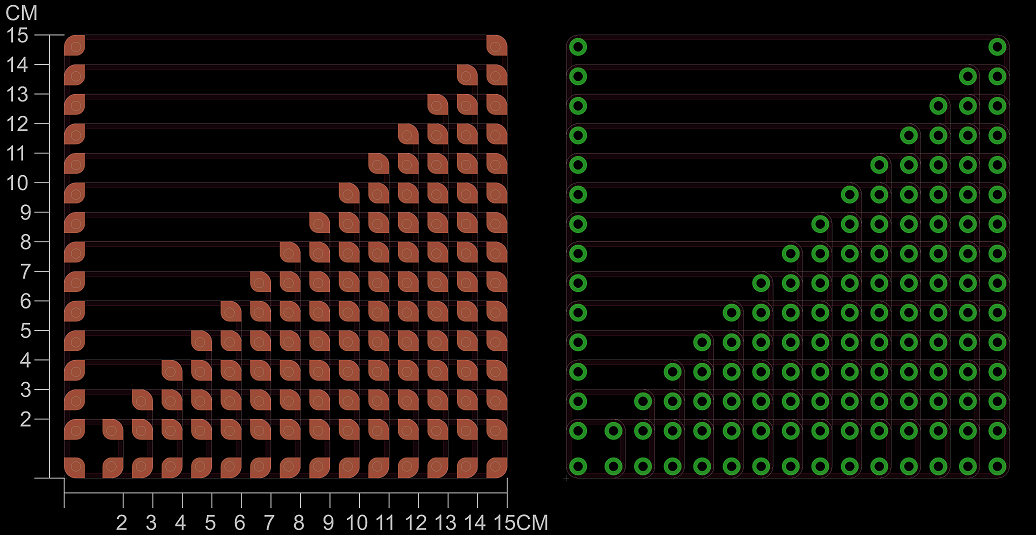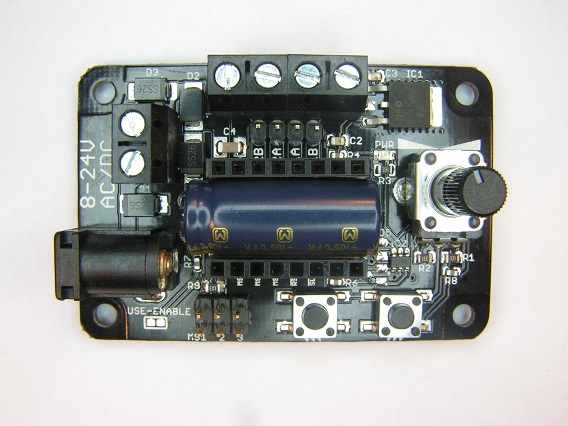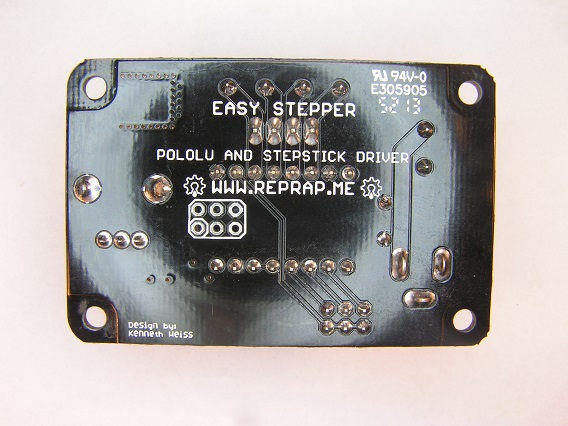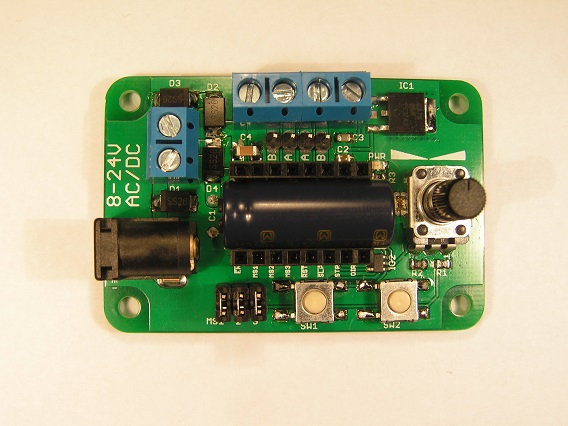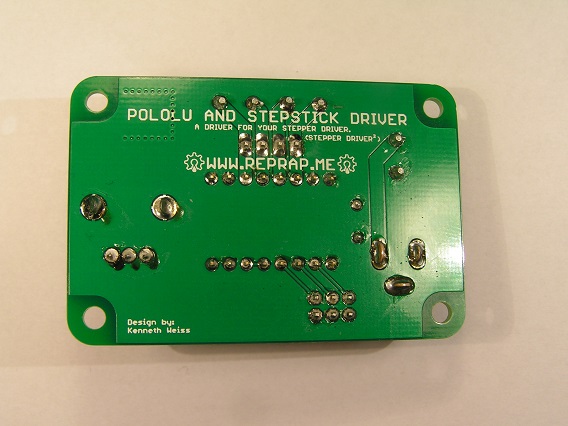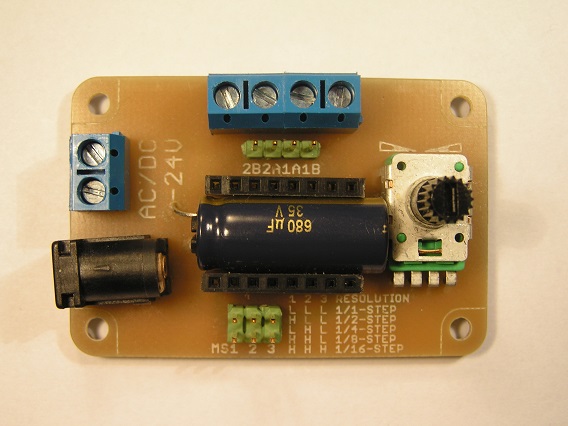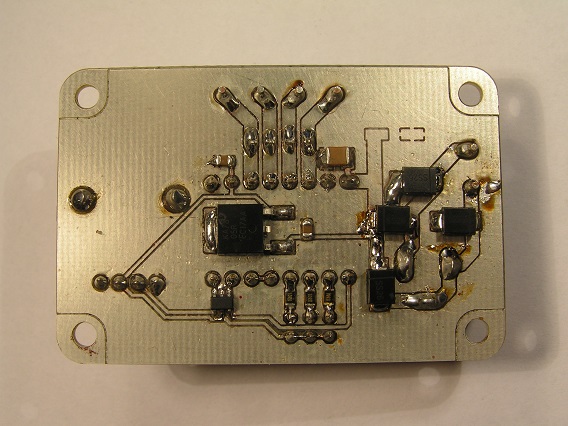Easy Stepper
Release status: Working
| Description | Easy Stepper Rev1
|
| License | unknown
|
| Author | |
| Contributors | |
| Based-on | [[]]
|
| Categories | |
| CAD Models | |
| External Link |
Contents
This is a driver for your stepper driver.
<videoflash type="youtube">F_W8n2Q1Aro</videoflash>
<videoflash type="youtube">_i3zfBoEtVc</videoflash>
It’s both a stepper motor tester and a stepper motor driver tester.
It’s also a tool for when you are making any kind of device that includes stepper motors or a toy to play with the stepper motor parts that you scavenged from some old equipment.
The Idea
The idea is to make a quick and simple tool to test stepper motors and mechanical assemblies such as stepper driven gearboxes and linear activators.
Just hook up whatever power supply (between 8 and 24V, AC or DC) you have lying around to the screw terminals or the barrel jack connector and whatever stepper driven device you have to the motor out pin header or screw terminal and you are ready to go.
The Motivation
The reason for this project was my frustration over how much it takes to just test a simple stepper motor.
To test a stepper motor you usually need some kind of MCU most likely a Arduino, your breadboard, cables, some kind of driver and other components.
When you got all that assembled you still need to write and upload some code to run the driver, but before you can do that you also need to find your USB cable and if the code doesn't work you have to debug it.
All this can easily take an hour but with the Easy Stepper you just plug in your stepper motor and whatever power supply you have and you are ready to go.
The Controls
The controls are really simple.
When the potentiometer is centered the stepper motor will stand still.
When the potentiometer is turned clockwise the stepper motor will start turning in one direction.
The further you turn the potentiometer the faster the motor turns and when you turn the potentiometer back the stepper will slow down again.
When you turn the potentiometer counterclockwise past the center the stepper motor will start turning in the other direction.
The two buttons are for fast forward and fast backwards.
With the MS1-2-3 jumpers you can set the microstep resolution on the Polulu/Stepstick.
The Use-Enable solder jumper should not be used with the standard firmware.
Data
Input: 8 to 24V AC/DC
Output: Depending on the Pololu/Stepstick and power supply you are using.
Size: 40X60mm
MCU: Attiny10-TSHR - 8BIT - 12MHZ
Reprogramming the firmware
You can reprogram the Easy Stepper through the programming port on the backside of the Easy stepper.
To program the Easy stepper I use the AVRISP mkII programmer:
AVRISP mkII
There is also other ways to program the ATtiny.
Take a look at this Hackaday post to see how it can be done.
PCB Outline
The PCB outline is based on the Sick of Beige PCB from Dangerous Prototypes but the size that I wanted wasen't in the library so I made my own version of the library with a 10mm increment all the way from 20X20mm to 150X150mm with both unplated and plated mounting holes.
Download the Eagle library here: <{ File:Dp pcb-All sizes.zip }>
Rev1
File:Easy Stepper Motor Control.sch.pdf
3rd prototype
So I found out the hard way that if you plug in the stepstick the wrong way you will Zapp the stepstick and the ATtiny10 on the Easy Stepper.
I don't think that there is any way to protect the stepstick/pololu but I am currently working on a way to protect the Easy Stepper.
2nd prototype
1st prototype
The PCB for the 1st prototype is made on the LPKF Protomat C60 PCB milling machine in Labitat.
